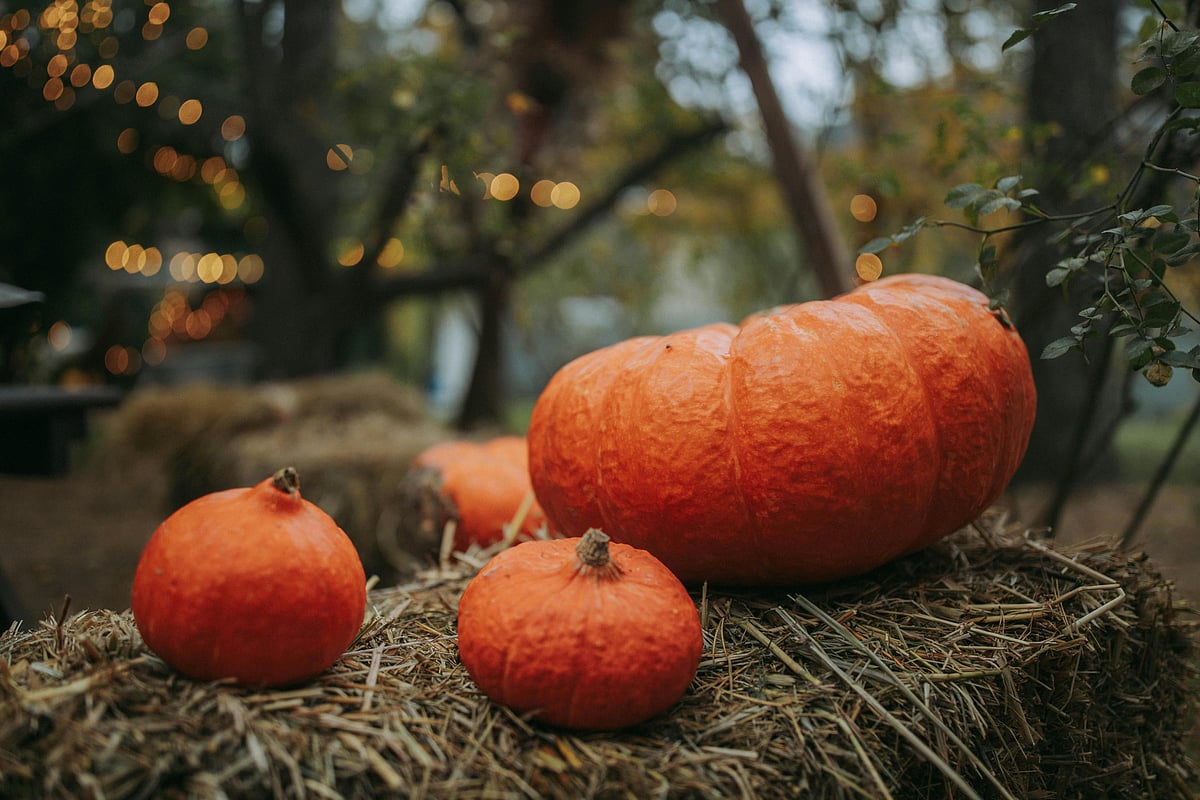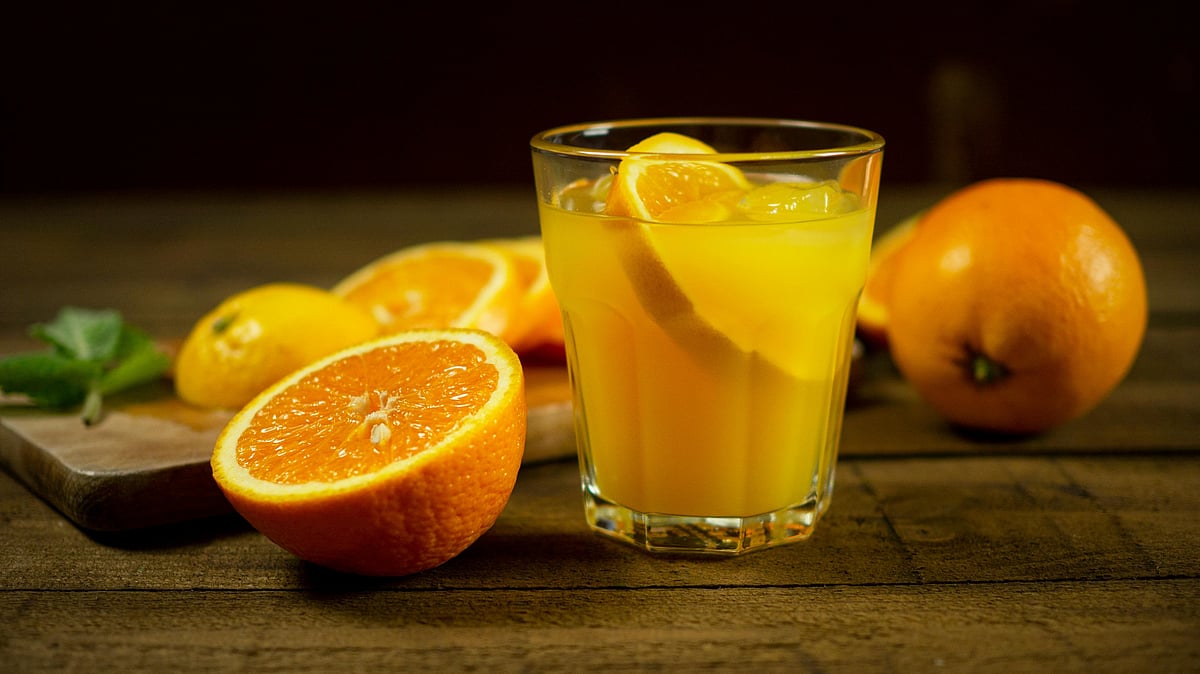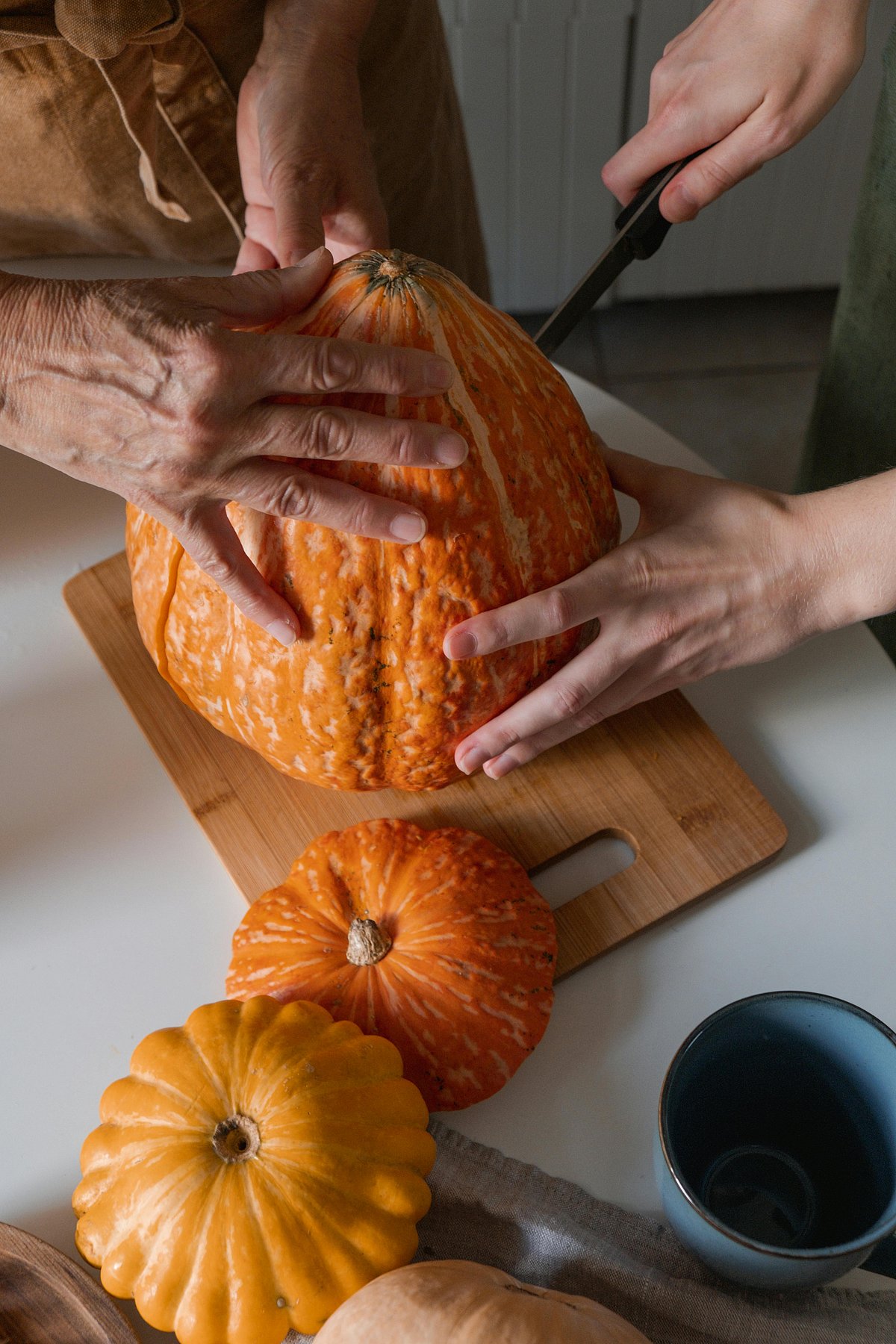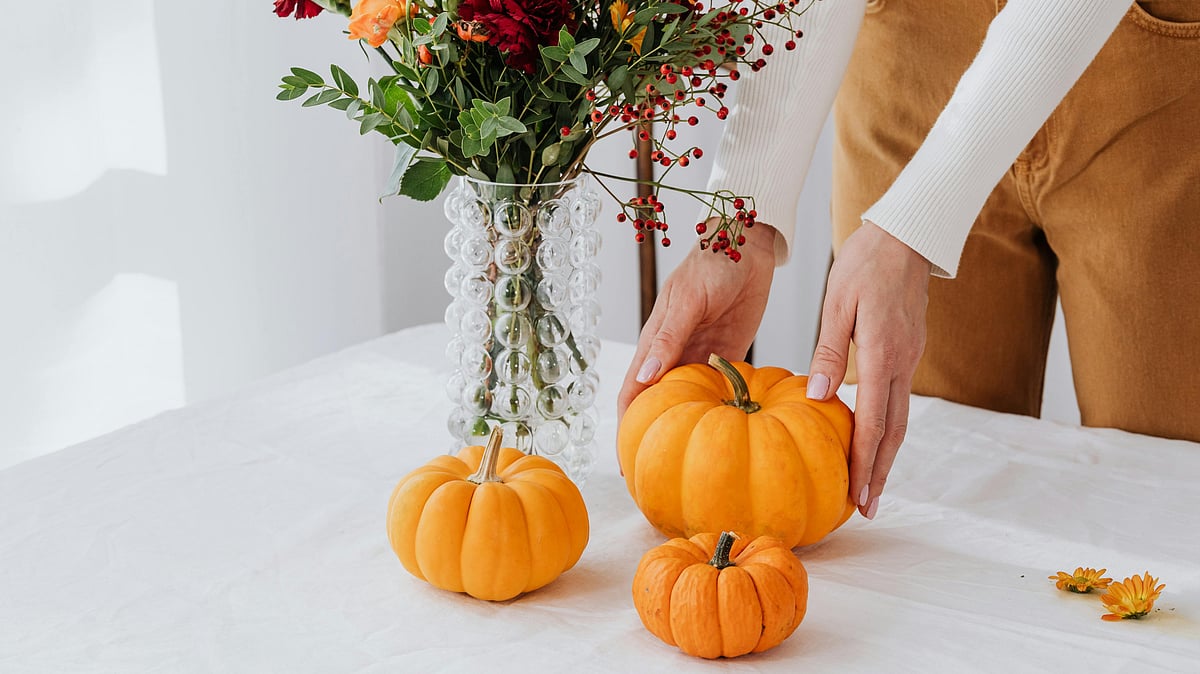Come Friday October 31, the festival of Halloween will be celebrated all across the world. The young and the old alike observe this day with playful tricks, delicious treats, outlandish masks, colourful costumes, surreal decorations and eventful parties. Among a tapestry of items included in the spectacular supernatural spread, intricately crafted hollow pumpkin masks and Halloween jack-o-lanterns —widely used as ornate pieces and sculptures — grab the eyeballs at large.
Portly Pumpkin
It’s big, round, orangy and a descendant of the Cucurbita (gourd) lineage. Born as a fruit with grooves but considered and used as a vegetable, pumpkin is a variety of farmed winter squash. It’s pumped up with nutrients. The bloated edible — consumed both fried and boiled — is characterised by its fat, heavy rind, richness in vitamin and mineral content and has insides replete with seeds and a fibrous flesh. The skin, flesh, seeds, leaves and even flowers are palatable. The fruit has a versatile quality.
In Good Shape
Be hale and hearty with the health benefits of pumpkin. An array of health advantages can be gained from eating pumpkins. “It is a powerhouse of wellness. It strengthens immunity, protects eyesight, supports heart health, improves digestion and aids in weight management. Its high water and fibre constituents make it ideal for detoxifying the body while keeping one full and light,” informs celebrity chef and restaurateur Varun Inamdar.
Every ingredient in its true original form is a “gift from Mother Nature and only a few shine brighter than the humble red pumpkin”, feels the culinary expert. “I call it ‘farmer’s gold’ because it carries the warmth of the sun, the sweetness of the soil and the glow of good health. Pumpkin is not just food but a source of nourishment as worthy as the lustrous yellow metal,” he praises.
Packed With Nutritious Punch

Pumpkin contains invaluable nutrients to benefit human health. It has rich essential vitamins and minerals, particularly vitamin A derived from beta-carotene to drive sharp vision, gleaming skin and strong immunity. Additionally, pumpkin provides vitamin C, which boosts collagen production and fights infections. Minerals like potassium and magnesium help control blood pressure and back heart health. Dietary fibre aids in digestion and promotes gut balance, while antioxidants delay ageing and reduce inflammation. “Together these dietary elements create a beautiful balance between nourishment and overall vitality,” states the chef.
Pumpkin is considered a superfood because it offers an exceptional combination of high nutritional value and low calorie content.
“Its antioxidant compounds also protect the body against cell damage caused by free radicals. Since it is naturally low in fat and calories yet packed with nutrients, pumpkin stands out as a wholesome food that supports a healthy diet and lifestyle,” explains Dt Amreen Sheikh, chief dietician, KIMS Hospitals in Thane.
Nutritionist Neha Chandna too dotes on pumpkin as a Halloween favourite. “It has its own specialities and is a sought-after fruit during this time of the year. Thanks to its Halloween fame! Who wouldn’t like a nutrient-dense fruit to fire one’s imagination both as a craftsman and a health-conscious foodie? It is nature’s one of the most balanced staples consumed for energy as well as resistance power,” she comments.

Goodness in Parts
Every portion of pumpkin has high nutritious value. Eaten by cutting it into pieces, diced or chopped, pumpkin never falls short of offering health and goodness to its consumers. Let’s delve deeper:
Seeds: Known as pepitas (hulled or roasted pumpkin seeds eaten as a snack or used in cooking), pumpkin seeds are rich in zinc, protein, omega-3 and healthy fats. They help build resilience, enhance sleep quality and shield heart health.
Skin: The rind consists of fibre and carotenoids. When roasted or pureed, it adds earthy flavour and natural antioxidants.
Flesh: The vibrant orange centre is loaded with beta-carotene, vitamin A and moisture, perfect for skin, vision and overall hydration.
Leaves: Often overlooked, pumpkin leaves are full of iron, calcium and fibre, making them wonderful for bone and blood health. They are delicious when lightly sautéed or steamed.
Flowers: Ideal for tempura (a Japanese mixed recipe of fish, shellfish or vegetables stir fried in batter) and fritters
Pumpkin Platters
A menu of healthy dishes can be prepared with pumpkins. Each dish celebrates the pumpkin’s natural sweetness and adaptability:
Steamed fish wrapped in pumpkin leaves
Alu wadi-inspired wadi using pumpkin leaves
Pumpkin soup with coconut milk
Steamed pumpkin idlis served with molagapodi (coarse, hot, spicy chutney powder from South India) made with curry leaves
Pumpkin ‘sannata’ raita (a traditional and cooling yogurt-based side dish from northern India, especially the provinces of Uttar Pradesh and Bihar)
Pumpkin bharta (a roasted and mashed vegetable dish popular in South Asia like India and Bangladesh, cooked with eggplants, onions or tomatoes as well as piquant spices)
Pumpkin hummus (a thick Middle-Eastern paste or spread of ground chickpeas, sesame seeds, olive oil, lemon and garlic)
Pumpkin appams (a bowl-shaped South Indian pancake made from a fermented batter of rice flour and coconut milk)
Vegan Spread

Pumpkin pairs beautifully with a few good vegetables listed below to whip up some taste bud-tickling dishes:
Carrots and sweet potatoes for a naturally sweet balance
Spinach, amaranth or methi (fenugreek) leaves for a contrast with earthy greens
Bell peppers for a pop of colour and crunchiness
Cauliflower, zucchini or beans for texture and depth
Tomatoes for natural acidity to cut through sweetness in soups, particularly. Besides, coconut milk can team up with pumpkins to add creaminess.
Fruity Fest
To toss up a fruit salad, several other fruits can be prudently mixed with pumpkins. Good news is that pumpkin works wonderfully with tropical and citrus fruits like:
Pineapple
Papaya
Orange segments
Pomegranate
Apple
Mango
Kiwi
A tip: One may combine roasted or steamed pumpkin cubes with the above-mentioned fruits, then drizzle the dish with a glazy honey-lime dressing and top it with mint and pumpkin seeds. The result is a tempting and refreshing sunshine salad bursting with colours, flavours and vigour.
“Every pumpkin bears a ray of sunny tenderness in its heart. Treat it with respect, cook it with love and trust me, it will reward you with gold on your plate. It’s a promising fruit,” assures Inamdar.
Sweet Pleasure
If you have a sweet tooth, you can easily pamper it with pumpkins. Given the fruit’s low calorie count and less fat content, it is adeptly used as a dessert ingredient.
“Yes, pumpkin’s naturally sweet flavour, creamy texture and minimal fat composition make it a versatile and healthy component for desserts. It blends well with warm spices like cinnamon, nutmeg and cardamom, allowing it to enhance both traditional and modern sweet dishes,” shares Sheikh.
She lists samples to substantiate her view. For instance, pumpkin pie is a classic dessert that combines pureed pumpkin with milk, eggs and aromatic spices to create a smooth, custard-like filling. In Indian cuisine, pumpkin halwa transforms grated pumpkin into a comforting treat when cooked slowly with milk, ghee and sugar. Similarly, pumpkin muffins and breads are popular baked options where the puree adds natural sweetness and moisture, thus trimming the need for excess butter or oil.
“Even lighter desserts like pumpkin pudding or smoothies showcase its ability to deliver creamy lushness with nominal calories. Thus, pumpkin’s nutritional profile and subtle sweetness make it a winner for some guilt-free indulgence in desserts,” reasons Sheikh.
A healthy pumpkin recipe is as follows:
Roasted Pumpkin Bharta
Ingredients:
500 gm red pumpkin (keep the skin on)
2 tbsps mustard oil
1 small onion, finely chopped
2 green chillies, finely chopped
1 tbsp fresh coriander leaves, chopped
½ tsp roasted cumin powder
¼ tsp black salt
Table salt, as required
1 tbsp lime juice
A pinch of smoked paprika
Method:
Roast the pumpkin whole over an open flame on charcoal or in a hot oven at 220°C until the skin blisters and the flesh turns soft and caramelised. Let it cool slightly.
Peel the charred skin and scoop out the soft pumpkin flesh into a bowl. Mash lightly, leaving some texture.
Drizzle cold-pressed mustard oil over the warm mash. The heat will mellow its sharpness while keeping the aroma.
Mix in the onions, green chillies, coriander, roasted cumin, salts, lime juice and paprika (if using). Stir gently.
Serve warm or at room temperature with bajra rotla (pearl millet flatbread), jowar bhakri (unleavened flatbread made from sorghum flour, a nutritious gluten-free grain) or even toasted pita bread.
Factoid
Rooted in the ancient Celtic fest of Samhain, Halloween announces the culmination of the harvest and the commencement of winter. Interspersed with Christian influences, Halloween is derived from ‘All Hallows’ Eve’, the evening preceding the All Saints’ Day (Nov 1), which along with All Souls’ Day (Nov 2) became part of Allhallowtide, an opportunity to pay homage to the departed souls. Halloween falls on the eve of All Saints’ Day, the time to merge the thin line between the living and the dead. It is meant to remember the deceased with reverence whose spirits are said to return to the earth’s crust. People block this date on their calendar to mark the festive fervor and the slight nip in the air with eerie arrangements.









